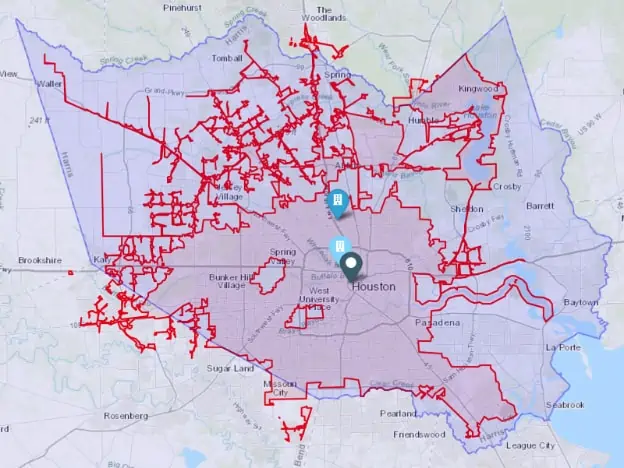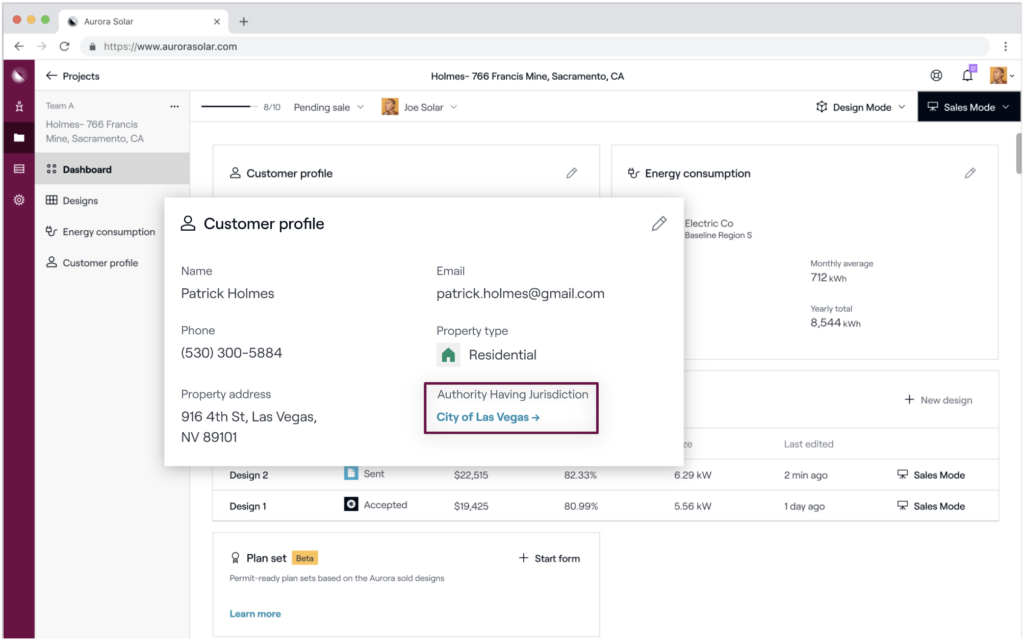There are literally tens of thousands of Authority Having Jurisdictions (AHJs) across the country. They can be individual states, counties, cities, towns, utilities, or other entities. They’re responsible for building and safety standards, and there can be considerable amounts of variability in requirements from one jurisdiction to another, and in the type and complexity of projects.
Most everyone that’s worked in the solar industry has experienced the difficulties of having everyone on the same page when it comes to meeting AHJ requirements for selling, designing, and installing a system. And the costs, delays, and headaches when AHJ driven changes happen can be significant.
That’s why we’re introducing our new AHJ Database. Now, when a new project is created, Aurora uses the project’s address to identify the Authority Having Jurisdiction (AHJ) and gives easy access to track and reference their requirements. This feature is available as a standard part of Aurora.
How the AHJ Database helps
We’ve all had those projects where we have trouble identifying the AHJ and its specific requirements, or teams aren’t able to reference the same information. Then the project gets to the permitting stage and requires a layout change for different fire pathways, or added equipment for disconnect and metering requirements. This increases your time on the project, and leaves the homeowners with a poor experience.
The AHJ database enables design and sales teams to be aligned on requirements, so that the expectations for the system can be set with the homeowner from the beginning, and the process to system activation is smoother and faster.
AHJ boundaries are complex shapes, and the boundaries between them can be confusing: For example, different sides of a street may fall into different jurisdictions. So identifying the correct AHJ per project is the first challenge.

In addition to identifying the AHJ, storing their requirements in an easily referenceable way is critical for designing, selling, and installing systems. This can range from layout restrictions, max system sizes allowed, environmental factors to adhere to, and beyond. While some states have statewide guidelines or legislation for which building codes and requirements to follow, the codes leave interpretation and implementation up to each individual AHJ.
This can add significant complexity, back-and-forth, and time to even the most straightforward installs.
To help make this process smoother, all the automatically identified AHJ information can be accessed through Design Mode so you can easily review the AHJ requirements from the AHJ and Utility preferences in real-time while creating the design. As your team learns about specific AHJ requirements from building departments where you operate in the US, you can store and modify them so your sales, design, permitting, and install teams can operate more efficiently.
How do I use the AHJ Database in Aurora?
We have a detailed article on AHJ identification and the database in our help center.

How the AHJ Database works
Every Aurora customer in the US now has access to the AHJ Database feature as part of their subscription.
It enables customers to track requirements from the AHJ/Utility preferences in real-time.
This means you can store and share requirements as you learn them from building departments across the country, ensuring your design, permitting, and install teams are aligned.
To go a level down, Aurora will provide and manage a limited high-level data set of AHJ requirements. For example:
- AHJ Name
- AHJ State
- Electrical Code
- Building Code
- Residential Code
- Fire Code
- Wind Code
- Max Temp (ASHRAE)
- Min Temp (ASHRAE)
- Wind Speed (MPH)
- Snow Load (lbs)
Customers can request updates to the Aurora managed fields, and Aurora can review the request and update them for all customers.
You can enter and store AHJ-specific data that other team members can access. For example:
- Local Branch Office
- AHJ Contacts
- Permit Required
- Permit Cost
- Permit Turnaround Time
- Submittal Process
- System Size Limit (kW)
- Online Submittal Link
- Permit Application Form
- HOA Approval Required
- Homeowner Signature on plans
Aurora can also mass upload your existing AHJ requirements to your tenant’s AHJ database.

AHJ identification in seconds via API
AHJ identification is also supported via API. Your teams can now have reliable information about a project’s AHJ within seconds of creating a project in Aurora. To learn how to put this into action, step-by-step, read our Retrieve AHJ Name tutorial and check out our changelog entry on the topic.
For more information…
The AHJ Database allows US users to reference and update requirements for all the jurisdictions your company operates in, ensuring your teams are on the same page and allowing them to scale more efficiently. With it you can:
- Integrate all your AHJ requirements into your design tool
- Seamlessly enter new markets by eliminating the AHJ research and learning process
- Speed up the learning curve for new hires
- Maintain a single source of truth for AHJ requirements to reduce design changes and time to install
To learn more about how to use the AHJ identification and Database, check out our FAQs below and refer to our AHJ identification and Database help article. If you have any other questions, please contact us to get a personalized tour of the feature.


